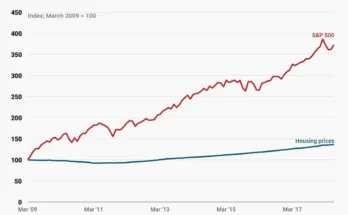Building a diversified investment portfolio is essential for any investor looking to minimize risk and maximize returns. Diversification involves spreading your investments across various asset classes to reduce the impact of any single investment’s poor performance. In this blog post, we will explore the steps to create a well-balanced portfolio that aligns with your financial goals.
Why is Diversification Important?
-
Risk Management: One of the primary benefits of diversification is risk management. By investing in different asset classes, you can protect your portfolio from significant losses. If one investment performs poorly, others may perform well, balancing out the overall performance.
-
Smoother Returns: A diversified portfolio tends to provide more stable returns over time. Different assets may perform well at different times, which can help smooth out the volatility in your investment returns.
Key Components of a Diversified Portfolio
-
Asset Allocation
- Stocks: Equities can offer high returns but come with higher risk. Consider a mix of large-cap, mid-cap, and small-cap stocks to achieve a balanced exposure.
- Bonds: Fixed-income securities provide stability and regular income. Including government and corporate bonds can help balance your portfolio.
- Real Estate: Investing in real estate can provide both income and appreciation. Real Estate Investment Trusts (REITs) are a great way to gain exposure without direct property ownership.
- Commodities: Gold, silver, and other commodities can act as a hedge against inflation and market downturns.
-
Geographic Diversification
- Invest in both domestic and international markets. This can help reduce risk associated with economic downturns in a specific region.
-
Sector Diversification
- Spread investments across various sectors such as technology, healthcare, finance, and consumer goods. This reduces the risk of sector-specific downturns.
Assessing Your Risk Tolerance
-
Determine Your Investment Goals: Are you investing for retirement, a major purchase, or wealth accumulation? Your goals will influence your risk tolerance.
-
Evaluate Your Time Horizon: Longer investment horizons can typically withstand more risk, while shorter horizons may require a more conservative approach.
-
Consider Your Financial Situation: Assess your current financial status, including income, expenses, and existing investments, to determine how much risk you can afford to take.
Practical Steps to Build Your Portfolio
-
Set Clear Investment Goals
- Define what you want to achieve with your investments. This could be saving for retirement, funding education, or building wealth.
-
Choose an Investment Strategy
- Decide whether you want to be an active or passive investor. Active investing involves frequent trading, while passive investing focuses on long-term growth.
-
Select Investment Vehicles
- Choose between individual stocks, mutual funds, ETFs, or a combination. ETFs and mutual funds can provide instant diversification.
-
Regularly Rebalance Your Portfolio
- Over time, some investments may grow faster than others, leading to an unbalanced portfolio. Regularly review and adjust your asset allocation to maintain your desired level of diversification.
Monitoring and Adjusting Your Portfolio
-
Stay Informed: Keep up with market trends and economic indicators that may affect your investments.
-
Review Performance: Regularly assess the performance of your portfolio against your goals. Make adjustments as necessary to stay on track.
-
Consult a Financial Advisor: If you’re unsure about your investment strategy, consider seeking professional advice to help tailor your portfolio to your needs.
Conclusion
A well-diversified investment portfolio is essential for managing risk and achieving financial goals. By understanding the importance of diversification, assessing your risk tolerance, and following practical steps to build and maintain your portfolio, you can enhance your chances of long-term investment success. Start today by evaluating your current investments and making necessary adjustments to create a balanced and diversified portfolio that works for you.




